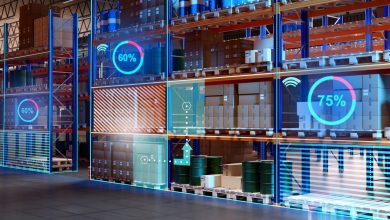
Goutham Nekkalapu stands as a sentinel protecting hundreds of millions of users from digital threats. As a senior AI engineer, Nekkalapu has witnessed the dramatic transformation of cybersecurity from rule-based systems to sophisticated AI-powered defense platforms. His work spans the full spectrum of AI applications, from early named entity recognition for PII detection to cutting-edge large language models that provide real-time user guidance and proactive threat mitigation.
With multiple patents to his name and experience protecting hundreds of millions of users, Nekkalapu represents a new generation of technologists who understand that the future of digital security lies not just in detecting threats, but in creating seamless, user-friendly experiences that make privacy protection effortless. In this conversation, he explores the AI arms race between defenders and attackers, the critical mistakes organizations make when implementing GenAI, and his vision for a future where privacy and innovation reinforce rather than compete with each other.
You’ve been at the forefront of applying AI to cybersecurity for years. How has the intersection of AI and cybersecurity evolved during your tenure, and what surprised you most about this evolution?
The transformation has been remarkable. When I started, AI in cybersecurity was dominated by highly specialized, narrow models: rule-based systems, traditional ML classifiers, and anomaly detection algorithms where feature engineering was the cornerstone of progress. Today, advances in deep learning, contextual embeddings, and large language models have evolved these into comprehensive platforms that don’t just detect threats, but provide real-time guidance to users and take proactive defensive measures.
At Gen Digital, I’ve witnessed this evolution firsthand. Early on, I worked on initiatives like multi-label classification and named entity recognition which required substantial investment in data labeling and model training processes that were both time-intensive and resource-heavy. Now, we can leverage LLMs with few-shot prompting and fine-tuning techniques to achieve similar or better results with significantly reduced overhead.
What surprised me most was the velocity at which generative AI transitioned from research curiosity to production-critical capability. This shift has fundamentally reshaped user experience expectations and now demands the same level of operational discipline as for traditional solutions.
However, it’s crucial to acknowledge that LLMs have also democratized sophisticated attack capabilities. Threat actors now have access to the same powerful tools we use for defense. Rather than viewing this as a setback, it has accelerated our innovation cycles and pushed us to develop more effective, adaptive solutions. This arms race has ultimately made the cybersecurity landscape more dynamic and has elevated the importance of staying ahead through continuous innovation.
From your early work on Named Entity Recognition for PII detection to now leading AI-powered personalization engines, your career spans the full spectrum of AI applications. What drove you to focus specifically on the cybersecurity and privacy protection space?
Early in my career, I worked on NLP tasks like Named Entity Recognition to detect PII with high accuracy; text classification, summarization using ML/Deep Learning techniques which taught me that even small gains in detection can significantly reduce real-world risk. Later my work in fraud detection and privacy tools, I realized the domain’s unique mix of high technical challenge and tangible user impact. Security and privacy demand not just accuracy but also speed, scalability, and ethical handling of sensitive data, constraints that push you to design robust, user-centric solutions. That blend of complexity and purpose is why I’ve stayed in the field and expanded into other problem spaces where I can apply machine learning skillset.
You recently architected an AI-powered solution using LLMs with a RAG framework for subscription cancellation information. Can you walk us through the technical challenges of building this system and how it represents the next generation of user experience design?
The biggest hurdle was data heterogeneity; cancellation steps are scattered, constantly changing, and written in inconsistent formats. We used RAG to combine an index of authoritative sources (support pages, official FAQs) with live search integration. Another challenge was structuring LLM responses so the front-end could present clear, actionable steps instead of generic text. We designed prompts and function-calls so the LLM could produce structured steps and metadata (URLs, API calls) while avoiding hallucination. For maintaining quality in answers we generated, we built a review & feedback loop so human reviewers or automated signals could retrain ranking/prompts. Caching was added for popular queries to reduce cost and latency. The result was a conversational, guided flow with a dynamic, context-aware experience, giving users natural-language instructions that can be executed or validated by the UI (e.g., pre-fill, deep links, step-by-step guidance). This illustrates how AI can turn a frustrating process into a smooth, user-friendly interaction.
What are the most critical mistakes you see organizations making when implementing GenAI solutions, and how can they avoid them?
The biggest mistake I see is treating GenAI as a black box without proper measurement and oversight. Organizations deploy these systems without defining clear success metrics like accuracy, safety, latency, cost etc and then wonder why results are inconsistent or expensive. The solution is rigorous instrumentation: build evaluation frameworks, implement human-in-the-loop reviews, and capture user feedback from day one. Custom evaluations are worth the upfront investment, especially as your system evolves.
Data staleness is another critical issue. GenAI models trained on static datasets quickly become outdated. This is where retrieval-augmented generation really shines—pairing LLMs with live data sources keeps your system current and grounded.
I also see teams underestimating operational realities. They’ll use large models like GPT-4, Claude-sonnet for every query, then panic when the API bills arrive. Smart architectures use hybrid approaches, lightweight models for routine tasks, powerful LLMs only when needed.
Finally, many organizations treat responsible AI as an afterthought. But guardrails, bias testing, and review workflows aren’t just about risk management, they’re essential for building stakeholder trust and ensuring long-term success. Starting with these foundations will go a long way rather than retrofitting them later.
Without revealing proprietary details, of course, what makes an AI-powered security system truly effective in the real world versus just impressive in the lab?
True effectiveness combines measurable impact with operational reliability. The difference lies in handling edge cases. Models must reduce real risk, faster remediation when needed without undermining user trust through false alarms. Systems also need production-grade performance, from low latency to high availability, with privacy-by-design principles baked in. At scale, continuous feedback loops are essential; attacker tactics evolve, and so must the models. The difference between “impressive in the lab” and “effective in the wild” is the ability to sustain accuracy, safety, and usability over millions of daily interactions.
The cybersecurity landscape is experiencing an AI arms race, with both defenders and attackers leveraging the same technologies. From your position at Gen Digital protecting 500+ million users, how do you see this dynamic playing out over the next 2-3 years?
In the next few years will see a shift from primarily being reactive to more predictive/proactive security. Attackers are already using AI to scale phishing, impersonation, and identity fraud, and defenders are countering with automated detection, user education, and context-aware risk scoring. In the next few years, success will hinge on fusing multiple signals like device telemetry, behavioral patterns, and identity graphs into adaptive defenses. The organizations that win will be those that operationalize AI not just for detection but for rapid, user-friendly remediation, while collaborating across the industry to share threat intelligence and standardize safe AI deployments.
You’ve moved from traditional machine learning approaches like clustering and deep learning to cutting-edge LLM implementations. What advice would you give to security professionals who are still primarily using conventional ML techniques about making this transition?
My biggest piece of advice is Don’t throw out what’s working. When we first started experimenting with LLMs, we kept our existing ML models running in production while we tested new approaches alongside them.
The key is understanding that LLMs aren’t a silver bullet, they excel at reasoning and language tasks but aren’t necessarily better for every problem. Start by identifying where natural language understanding could genuinely add value, like alert triage or policy interpretation.
I’d recommend beginning with simple prompting or basic RAG implementations since they let you leverage your existing data infrastructure while adding generative capabilities. Pick one concrete use case like maybe automating incident summaries or improving your documentation and really nail the fundamentals: clean data ingestion, effective prompting strategies, and robust evaluation metrics.
The operational side is crucial too. These models can be expensive and unpredictable, so build in proper monitoring, cost controls, and fallback mechanisms from day one. And honestly, the biggest challenge isn’t technical but it’s getting security, engineering, and compliance teams aligned on responsible AI practices. Invest in that cross-functional collaboration early.
You’re a named inventor on multiple patents related to cybersecurity and AI applications. What’s the process like for translating research breakthroughs into practical, patentable innovations that can protect millions of users?
The journey from research breakthrough to patent begins with recognizing when you’ve solved a problem in a genuinely novel way. Often, the best innovations emerge organically during development; you’re tackling a real-world challenge and suddenly realize your approach could be fundamentally different from existing solutions.
The critical step is working closely with patent attorneys or in-house patent committee to articulate not just what the innovation does, but why it’s technically distinct and non-obvious. You need to demonstrate clear technical merit while showing how it addresses real user protection needs at scale.
What I find most compelling is maintaining that research mindset even in production environments. Every challenge becomes an opportunity to push boundaries. The ultimate validation comes when you see your patented approach deployed in products that genuinely enhance protection for millions of users, transforming an abstract idea into concrete value.
You’ve led cross-functional teams across multiple geographic locations while co-owning business-critical repositories. What’s your approach to fostering AI innovation within large, established organizations that may be resistant to rapid technological change?
In big companies, the key is to prove value quickly and reduce adoption friction. I often start with small pilots that deliver visible ROI, backed by clear metrics; especially measure and communicate impact in business terms. Building reusable internal tools from evaluation dashboards to prompt libraries lowers the barrier for other teams to experiment safely. Education is just as important; running workshops and publishing guidelines helps create a shared understanding of responsible AI. Cross-functional collaboration and internal beta rollouts are essential to earning trust and scaling innovation sustainably.
Looking ahead, what emerging AI capabilities do you think will have the biggest impact on how we protect digital privacy and identity? What should both technologists and everyday users be preparing for?
The trajectory of AI development right now is unprecedented. We’re seeing capabilities emerge that fundamentally reshape the threat landscape while simultaneously offering new defensive possibilities. I think we’re at an inflection point where the same technologies creating new vulnerabilities are also our best hope for addressing them.
The most transformative capability I see emerging is what I call “privacy-aware AI” – systems that understand context, intent, and sensitivity without requiring access to raw data. Homomorphic encryption helps here. It is a form of encryption that allows computations to be performed directly on encrypted data, without needing to decrypt it first. The result of these computations remains encrypted, and when it is finally decrypted, it matches the result of the same operations performed on the original, unencrypted data. It is just the beginning. We’re moving toward AI that can perform complex analysis on encrypted data, but more importantly, AI that inherently understands the privacy implications of every operation it performs.
Another thing that comes to mind is Federated learning. It is evolving beyond simple model training. The next generation will enable sophisticated collective intelligence. Imagine AI systems that can learn from patterns across millions of users while maintaining perfect data isolation. This isn’t just about training models; it’s about creating shared knowledge without shared exposure.
But here’s what excites me most: autonomous privacy agents. Think AI systems that act as your personal digital representatives, using protocols like MCP to negotiate permissions, manage your digital footprint, and make real-time privacy decisions based on your values and risk tolerance. These aren’t just tools – they’re digital extensions of your own privacy preferences.
For technologists, the imperative is clear: we need robust evaluation frameworks that can assess both capability and safety simultaneously. Privacy-preserving compute architectures need to become as fundamental as security-by-design. And we desperately need governance frameworks that can evolve as quickly as the technology itself.
For everyday users, the landscape is shifting dramatically. The old model of reading privacy policies and clicking checkboxes is dead. Future systems will provide intelligent, contextual alerts that actually help you understand trade-offs. But users still need to cultivate digital hygiene – understanding what data they’re creating, where it flows, and what their personal risk tolerance is.
The real opportunity here transcends traditional privacy concerns – we’re architecting a new relationship between humans and technology. Instead of users constantly making privacy trade-offs, ideally we should be moving toward systems that preserve privacy by design while delivering better experiences. To me success looks like a world where embracing cutting-edge digital innovation and maintaining robust privacy aren’t competing interests, but mutually reinforcing goals; I hope we achieve that.



